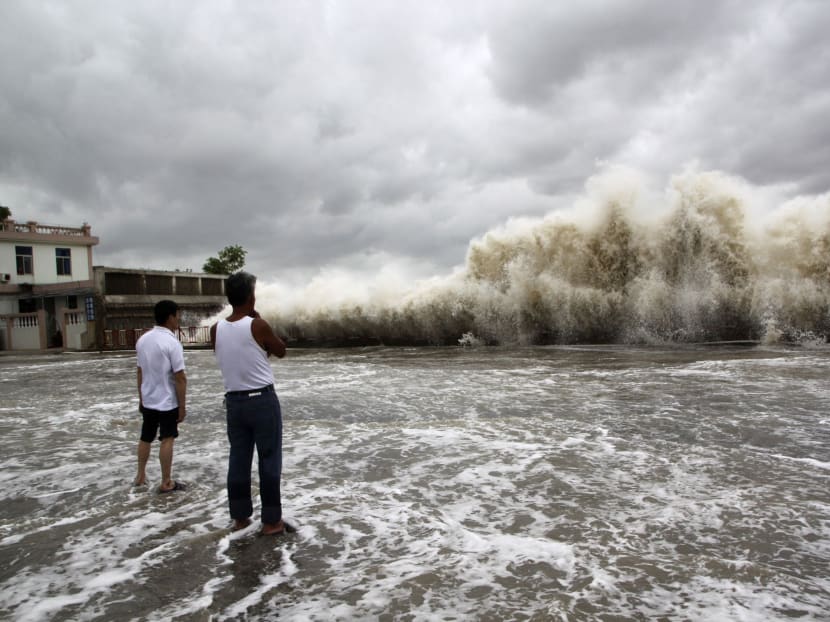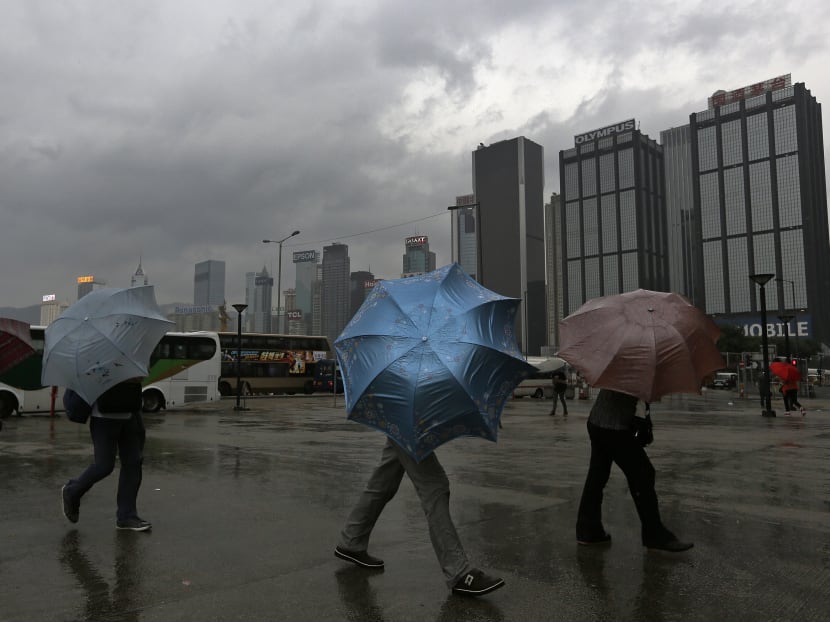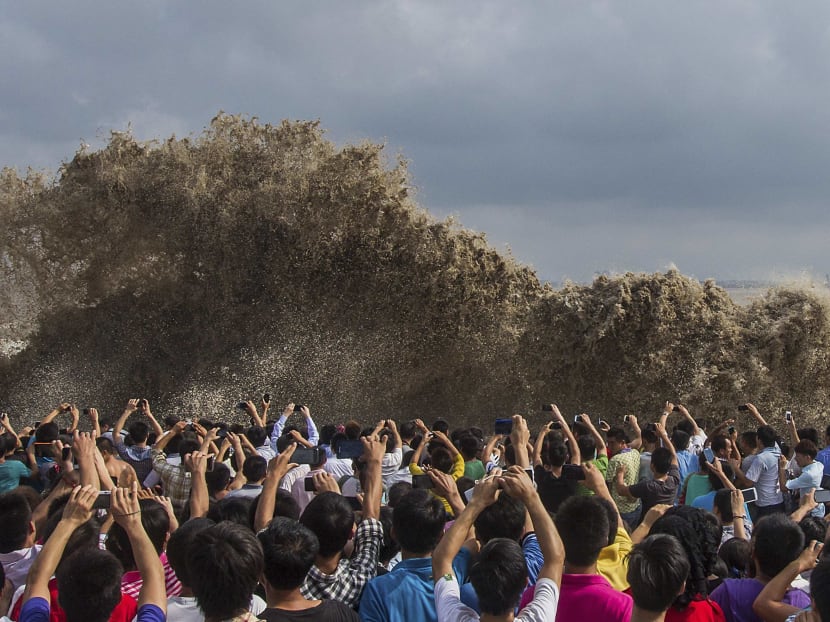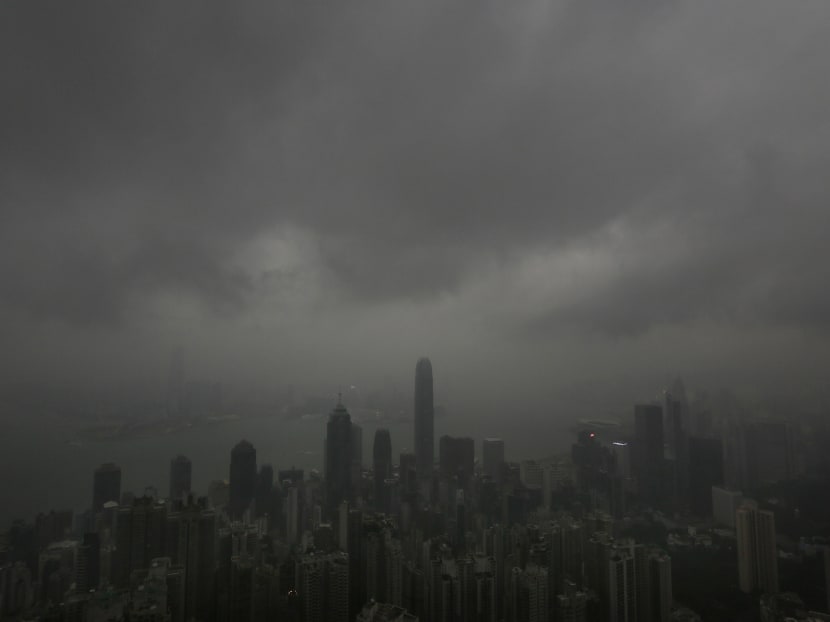Powerful typhoon veers from Hong Kong, hits China
HONG KONG — The year’s most powerful typhoon slammed into southern China this evening (Sept 22), forcing hundreds of flight cancellations, shutting down shipping and putting a nuclear power plant on alert after pummeling parts of the Philippines and Taiwan with heavy rains and fierce winds.




HONG KONG — The year’s most powerful typhoon slammed into southern China this evening (Sept 22), forcing hundreds of flight cancellations, shutting down shipping and putting a nuclear power plant on alert after pummeling parts of the Philippines and Taiwan with heavy rains and fierce winds.
Typhoon Usagi veered away from Hong Kong at the last minute and made landfall northeast of the former British colony. Forecasters had warned earlier that it posed a “severe threat” to the southern Chinese city.
Usagi — Japanese for rabbit — was classified as a severe typhoon, packing sustained winds of 175km per hour, with gusts of up to 213 kph.
The storm was downgraded from a super typhoon yesterday with its sustained winds falling below 241km per hour — as it passed through the Luzon Strait separating the Philippines and Taiwan, likely sparing residents in both places from the most destructive winds near its eye.
In the Philippines, Usagi left at least two people dead and two others missing, while in Taiwan nine people were hurt by falling trees on Kinmen island off China’s coast.
The typhoon landed near the city of Shanwei in the Chinese province of Guangdong, about 140km northeast of Hong Kong, and was moving west-northwest at 22 kph, the Hong Kong Observatory said. It was expected to skirt about 100km north of Hong Kong overnight.
Ferry services between Hong Kong and nearby Macau and outlying islands were suspended as the observatory raised the No. 8 storm warning signal, the third highest on a five-point scale. It reported winds as strong as 68 kph and warned that a storm surge and heavy rains could cause flooding in low-lying areas.
Police in Shanwei ordered more than 8,000 fishing boats to return to port and more than 1,200 residents were taken to temporary shelters, China’s official Xinhua news agency reported.
The typhoon wreaked havoc on airport schedules in Hong Kong, nearby Macau and mainland China, upsetting travel plans for many passengers who were returning home at the end of the three-day mid-autumn festival long weekend.
Hong Kong International Airport said 370 arriving and departing flights were canceled and another 64 delayed. Two of Hong Kong’s biggest airlines, Cathay Pacific Airways and Dragonair, canceled flights to and from the city’s airport starting at 6 pm today, with plans to resume operations tomorrow if conditions permit.
Beijing-based Air China scrubbed 148 flights to and from Hong Kong, Macau and five nearby mainland cities. China Southern Airlines, based in Guangzhou, canceled all flights to and from Hong Kong and three mainland airports, Xinhua said.
Fujian province suspended shipping between mainland China and Taiwan, the news agency said.
Authorities in Guangdong initiated an emergency response plan for the province’s nuclear power plants as Usagi approached, ordering four of six reactors at the Daya Bay nuclear power station northeast of Hong Kong to operate at a reduced load, Xinhua said. Outdoor work at two other nuclear power plants under construction in the province was suspended.
In Taiwan, more than 3,300 people were evacuated from flood-prone areas and mountainous regions. The storm also caused a landslide that buried a rail line on Taiwan’s southeast coast, but rail services were restored by this morning.
Another landslide late yesterday in the southeastern hot springs resort village of Chihpen sent mud and rocks crashing through the ground floor of a resort spa, forcing the evacuation of frightened guests. The Chihpen River breached its levies upriver, turning the village’s main street into a rock-strewn stream, flooding homes and damaging vehicles.
In the Philippines, a 50-year-old man and a 20-year-old woman drowned when a passenger boat capsized in rough waters off northeastern Aurora province, the Office of Civil Defense said yesterday. Two other people were missing in the incident, while the remaining nine passengers and crew were rescued.
The typhoon set off landslides, flooded parts of six Philippine provinces and affected nearly 20,000 people, but disaster-response officials did not immediately report additional casualties. AP





